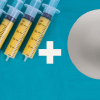Unparalleled experience in breast fat grafting in Sydney
Breast fat transfer, breast fat grafting or autologous breast fat transfer is a means of obtaining a breast augmentation as a more natural alternative to breast implants. This has the advantage of using your own fat that is removed with liposuction and then injected into the breasts. Dr Simone Matousek was one of the first surgeons to perform large volume breast augmentation with fat in Australia. Dr Simone Matousek saw the great potential of large volume fat grafting early on during her training over 12 years ago when the technique was not practised at all in Australia. Upon completion of her training, she travelled overseas to learn operative fat grafting directly from experts in the field which enabled her to develop her own fat grafting technique. As a result of her unparalleled breast fat grafting experience, she regularly has patients travel to Sydney from interstate or overseas for breast fat grafting procedures.
If you are from interstate or overseas you can send an email enquire to determine if you are suitable for the procedure. Not everyone has enough body fat to achieve good results with breast fat grafting alone. You might be suitable for a combination of breast fat grafting in conjunction with breast implants. In certain cases of breast asymmetry or people without much body fat on their chest and breastbone area, breast fat grafting can enhance a breast augmentation procedure with implants.
You can also book a skype consultation to determine if you are suitable to come to Sydney for the fat grafting procedure. You will need a face to face consultation prior to being able to book your surgery.






